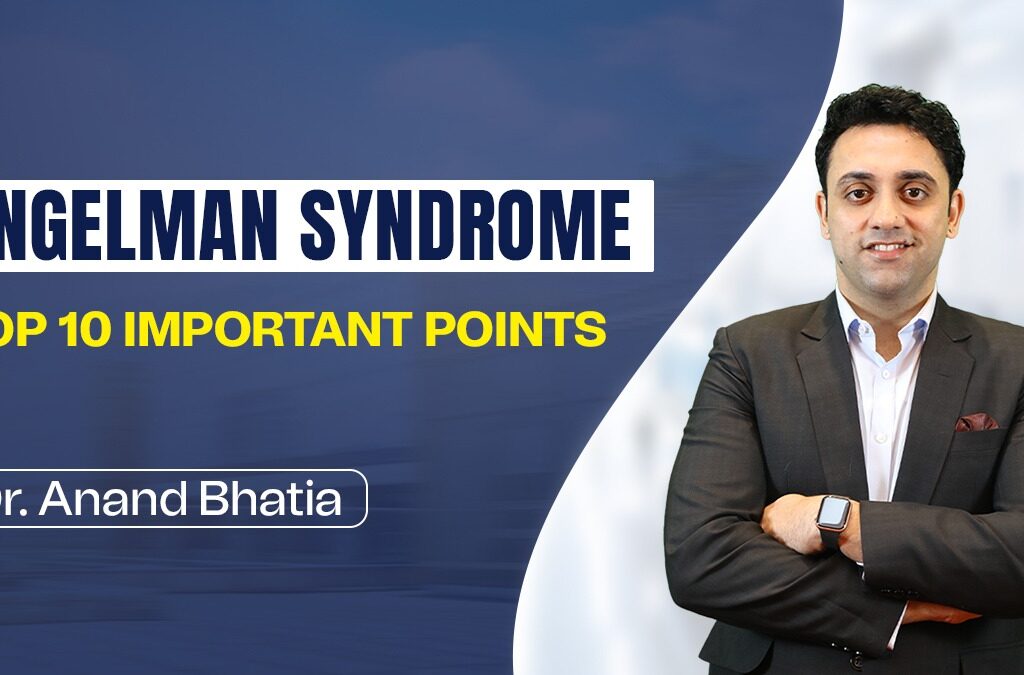Hey everyone! Welcome back to Pediatrics Residents, Pediatrics Residency with Dr. Anand. Today’s topic is one that medical students can’t afford to skip — Angelman Syndrome. Dr. Anand Bhatia explains this high-yield concept in his signature crisp and memorable style. Falling under the topic of uniparental disomy, Angelman Syndrome is a frequent topic in NEET PG, FMGE, and INI-CET papers. Let’s walk through the top 10 points that can help you retain the concept forever.
Understanding Uniparental Disomy
In a normal genetic setup, every person inherits one chromosome from their father and one from their mother.
However, in uniparental disomy, both copies of a particular chromosome come from the same parent — either both maternal or both paternal.
The three most important syndromes you must know for exams are:
- Angelman Syndrome
- Prader–Willi Syndrome
- Russell–Silver Syndrome
These three are classic PYQ favourites — so make sure you never mix them up.
Click Here to Watch: Angelman Syndrome Explained By Dr. Anand Bhatia
Angelman Syndrome — A Story You’ll Never Forget
Dr. Anand introduces a fun and smart way to memorise it:
“There was a micro puppet show that got delayed by 15 minutes, and it made the mother hyperactive.”
Now, here’s how that story helps you recall everything in one go:
| Story Element | Meaning | Key Takeaway |
| Micro | Microcephaly | Smaller head size |
| Puppet | Happy puppet face | Characteristic smiling facial expression |
| Delayed | Developmental delay | Intellectual disability and milestone delay |
| 15 minutes | Chromosome 15 | The chromosome involved in the syndrome |
| Mother hyperactive | Maternal gene deleted | Maternal deletion leads to hyperactive behaviour |
Genetic Basis
- Chromosome involved: 15
- Mechanism: Maternal gene deleted, paternal gene expressed twice (uniparental disomy)
- Type: Neurogenetic disorder
- Mnemonic: Micro puppet show delayed by 15 minutes — mother hyperactive
PYQ & Exam Alert
Question: Which chromosome is affected in Angelman Syndrome?
✅ Answer: Chromosome 15
Other important comparisons:
- Prader–Willi Syndrome: Paternal deletion on chromosome 15
- Russell–Silver Syndrome: Another uniparental disomy, associated with growth retardation
Remember this trio — Angelman, Prader–Willi, and Russell–Silver — they often appear together in exam stems!
Also Read: INI-CET November 2025: Last 30 Days Strategy Using the 80/20 Rule
Quick Recap — Top 10 Points to Remember
- It’s a uniparental disomy disorder
- Caused by maternal gene deletion
- Chromosome 15 is involved
- Microcephaly is common
- Happy puppet-like facial expression
- Developmental and intellectual delay
- A child is usually hyperactive
- Compare with Prader–Willi and Russell–Silver
- A simple mnemonic helps recall instantly
- Frequently asked in FMGE, INI-CET, and NEET PG
Conclusion
Angelman Syndrome is one of those topics that seem tricky at first, but becomes crystal clear once you understand the concept behind uniparental disomy. Dr. Anand Bhatia’s “micro puppet show” story makes it nearly impossible to forget — blending science with simplicity. So, the next time this topic appears in your exam, remember: Chromosome 15, maternal deletion, happy puppet face — and you’re done!
Keep revising, stay curious, and keep learning with positivity — just as Dr. Anand says, “Life is beautiful. Take care and keep shining!”
Also Read: INI-CET November 2025 in One Month: Your Ultimate Last-Minute Prep Guide
Download Cerebellum NEET PG Preparation Android app
Download Cerebellum NEET PG Preparation iOS app
Download Cerebellum NEET PG Preparation iphone app

